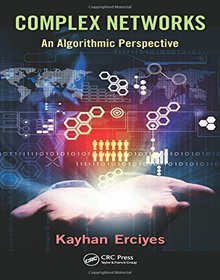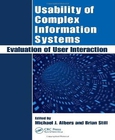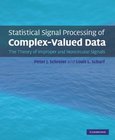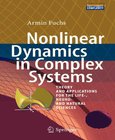Complex Networks
An Algorithmic Perspective

Book Details:
| Publisher: | CRC Press |
| Series: | CRC Press |
| Author: | Kayhan Erciyes |
| Edition: | 1 |
| ISBN-10: | 1466571667 |
| ISBN-13: | 9781466571662 |
| Pages: | 320 |
| Published: | Sep 06 2014 |
| Posted: | Mar 30 2015 |
| Language: | English |
| Book format: | |
| Book size: | 2.56 MB |
Book Description:
Network science is a rapidly emerging field of study that encompasses mathematics, computer science, physics, and engineering. A key issue in the study of complex networks is to understand the collective behavior of the various elements of these networks.Although the results from graph theory have proven to be powerful in investigating the structures of complex networks, few books focus on the algorithmic aspects of complex network analysis. Filling this need, Complex Networks: An Algorithmic Perspective supplies the basic theoretical algorithmic and graph theoretic knowledge needed by every researcher and student of complex networks.This book is about specifying, classifying, designing, and implementing mostly sequential and also parallel and distributed algorithms that can be used to analyze the static properties of complex networks. Providing a focused scope which consists of graph theory and algorithms for complex networks, the book identifies and describes a repertoire of algorithms that may be useful for any complex network. Provides the basic background in terms of graph theory Supplies a survey of the key algorithms for the analysis of complex networks Presents case studies of complex networks that illustrate the implementation of algorithms in real-world networks, including protein interaction networks, social networks, and computer networks Requiring only a basic discrete mathematics and algorithms background, the book supplies guidance that is accessible to beginning researchers and students with little background in complex networks. To help beginners in the field, most of the algorithms are provided in ready-to-be-executed form.While not a primary textbook, the author has included pedagogical features such as learning objectives, end-of-chapter summaries, and review questions
Download Link:
Related Books:
Usability of Complex Information Systems
Evaluation of User Interaction
Why do enterprise systems have complicated search pages, when Google has a single search box that works better? Why struggle with an expense reimbursement system that is not as easy as home accounting software? Although this seems like comparing apples to oranges, as information and communication technologies increasingly reach into every industry the demand for easy-to-use work tools continues to grow. An exploration of cutting-edge approaches for evaluating the usability of complex user interaction, Usability of Complex Information Systems: Evaluation of User Interaction focuses on improving design and communicating content to the end user. The book continues the conversation about the evolution of usability, asking how we can design and evaluate ...
Statistical Signal Processing of Complex-Valued Data
The Theory of Improper and Noncircular Signals
Complex-valued random signals are embedded in the very fabric of science and engineering, yet the usual assumptions made about their statistical behavior are often a poor representation of the underlying physics. This book deals with improper and noncircular complex signals, which do not conform to classical assumptions, and it demonstrates how correct treatment of these signals can have significant payoffs. The book begins with detailed coverage of the fundamental theory and presents a variety of tools and algorithms for dealing with improper and noncircular signals. It provides a comprehensive account of the main applications, covering detection, estimation, and signal analysis of stationary, nonstationary, and cyclostationary processes. Providing ...
Nonlinear Dynamics in Complex Systems
Theory and Applications for the Life-, Neuro- and Natural Sciences
With many areas of science reaching across their boundaries and becoming more and more interdisciplinary, students and researchers in these fields are confronted with techniques and tools not covered by their particular education. Especially in the life- and neurosciences quantitative models based on nonlinear dynamics and complex systems are becoming as frequently implemented as traditional statistical analysis. Unfamiliarity with the terminology and rigorous mathematics may discourage many scientists to adopt these methods for their own work, even though such reluctance in most cases is not justified.This book bridges this gap by introducing the procedures and methods used for analyzing nonlinear dynamical systems. In Part I, the concepts of fixed ...
2007 - 2021 © eBooks-IT.org



